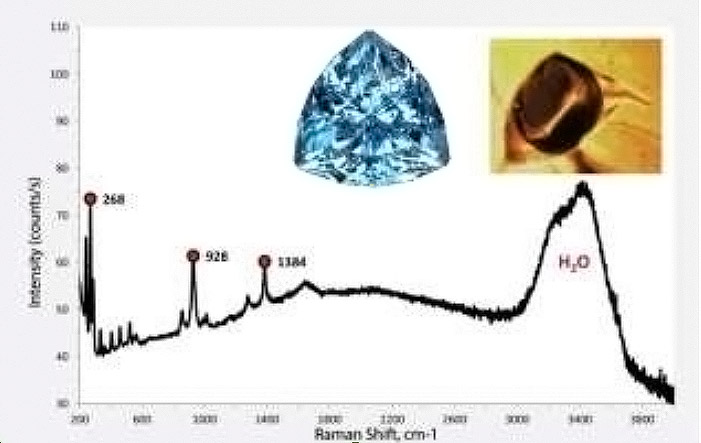Raman spectroscopy for non-destructive analysis of gemstones and minerals
Raman spectroscopy is a powerful tool for the rapid analysis of gemstones and minerals’ chemical composition and origin
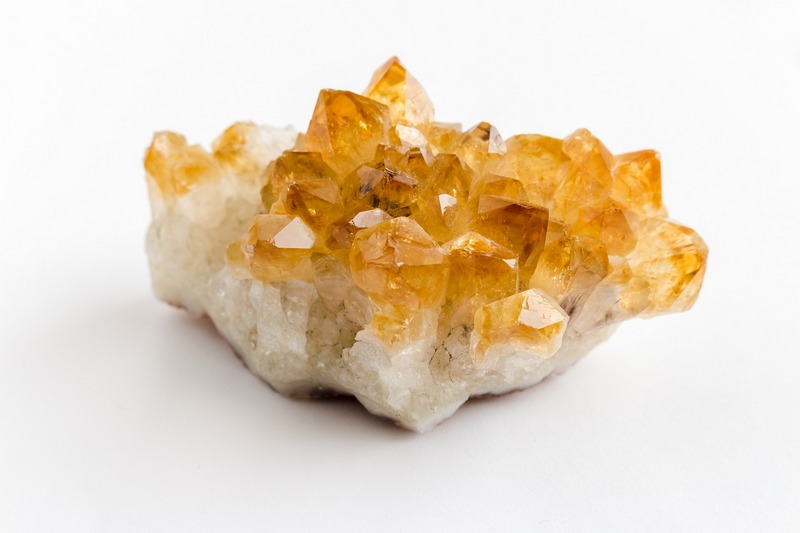
The method makes it possible to carry out:
- Analysis of the chemical composition of minerals and geological rocks.
- Analysis of precious stones.
- Verifcation of semi-precious stones.
- Identifcation of isomorphic minerals and subspecies.
- Examination of whether a gemstone has been treated.
- Identifcation of the origin and genotype of minerals and geological rocks.
The examination can be done in just a few seconds using a benchtop handheld Raman microscope or a portable Raman analyzer.
Instruments produced by RamanLife realize many advantages of Raman spectroscopy in gemology and mineralogy, being an irreplaceable diagnostic tool. Raman spectrometers are an indispensable diagnostic tool, especially when quick results are needed. These instruments signifcantly reduce the time of analysis and greatly increase the accuracy of determining chemical composition. Photon-Bio supplies compact Raman instruments which can perform measurements even in feld conditions
Examples of Raman spectroscopy applications
The measurements were taken at the Gemological Center of Moscow State University
Analysis of gemstones in jewels
(especially of historic value)
Solution: One of the most important point in analysis of valuable gemstones in jewels is to avoid mechanical contact with the gem which is provided by the nature of Ramanlife instruments. Moreover, Ramanlife device needs only a tiny focus spot on the gem surface to examine it, so complicated jewel sets do not pose any challenge to the measurement.
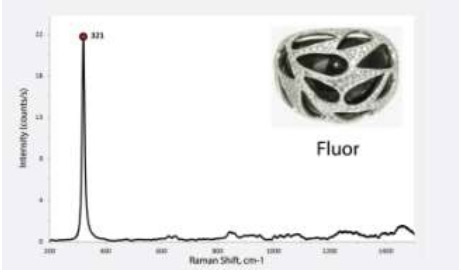
Analysis of complicated samples
(primary mineral products, non-transparent minerals and objects with high index of refraction)
Solution: This black gemstone that was claimed to be a black diamond is an example of a complicated case due to the index of refraction < 1.8 and its non-transparency. Naturally, it was difcult to examine the object using standard approaches, but Ramanlife device quickly detects that the gem is a moissanite.
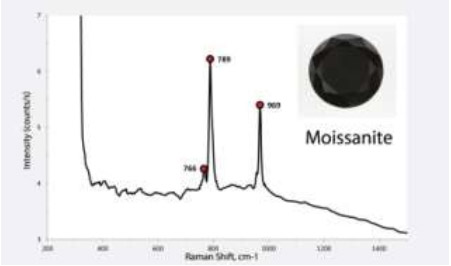
Quick analysis of rare gemstones
Solution: While examination of a rare gemstone may be highly time-consuming, the device rapidly gathers the spectrum and identifies a very rare mineral grandidierite.
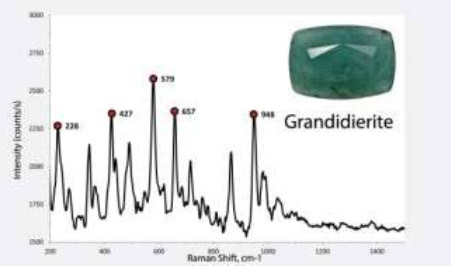
Determination of gemstone’s country of origin by analysis of internal inclusion
Solution: The microscope is focused on the inclusion using an inbuilt CCD camera. The spectrum reveals that the inclusion consists of uraninite (UO2). Inclusions of uraninite are typomorphic for Kashmir sapphire deposits in India.
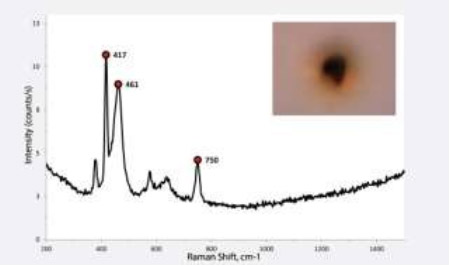
Determination of gemstone’s treatment by analysis of internal inclusions
Solution: The nature of black diamond is largely determined by inclusions responsible for its color: graphite, oxides, or sulphides. The picture demonstrates the Raman spectrum of black diamond at 1332 cm-1 painted with numerous graphite inclusions, the graphite band 1595 cm-1.
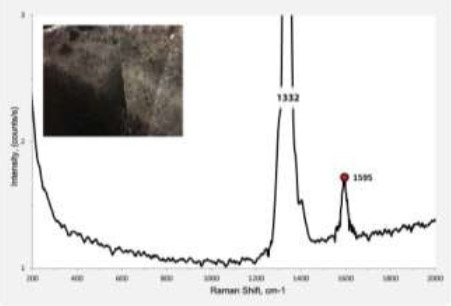
Determination of gemstone genesis and deposit by analysis of the composition of its liquid phase
Solution: Many gems contain gas-liquid inclusions, the composition of which is determined by the environment where the mineral was formated. For example, gas-liquid inclusions of rubies from some skarn deposits (like in Pakistan, Afghanistan) consist of CO2 and impurities of H2S, while gas-liquid inclusions of rubies from other deposits contain pure CO2. Of course, this only applies to rubies, which were not treated with high temperature.
Here we use Raman microscope to measure the Raman spectrum of a gas-liquid inclusion in topaz. All lines in spectrum in the area before 1500 cm-1 are associated with the Raman lines of topaz itself, and a broad band in the region of 3000-3500 cm-1 is caused by water contained in inclusion.
